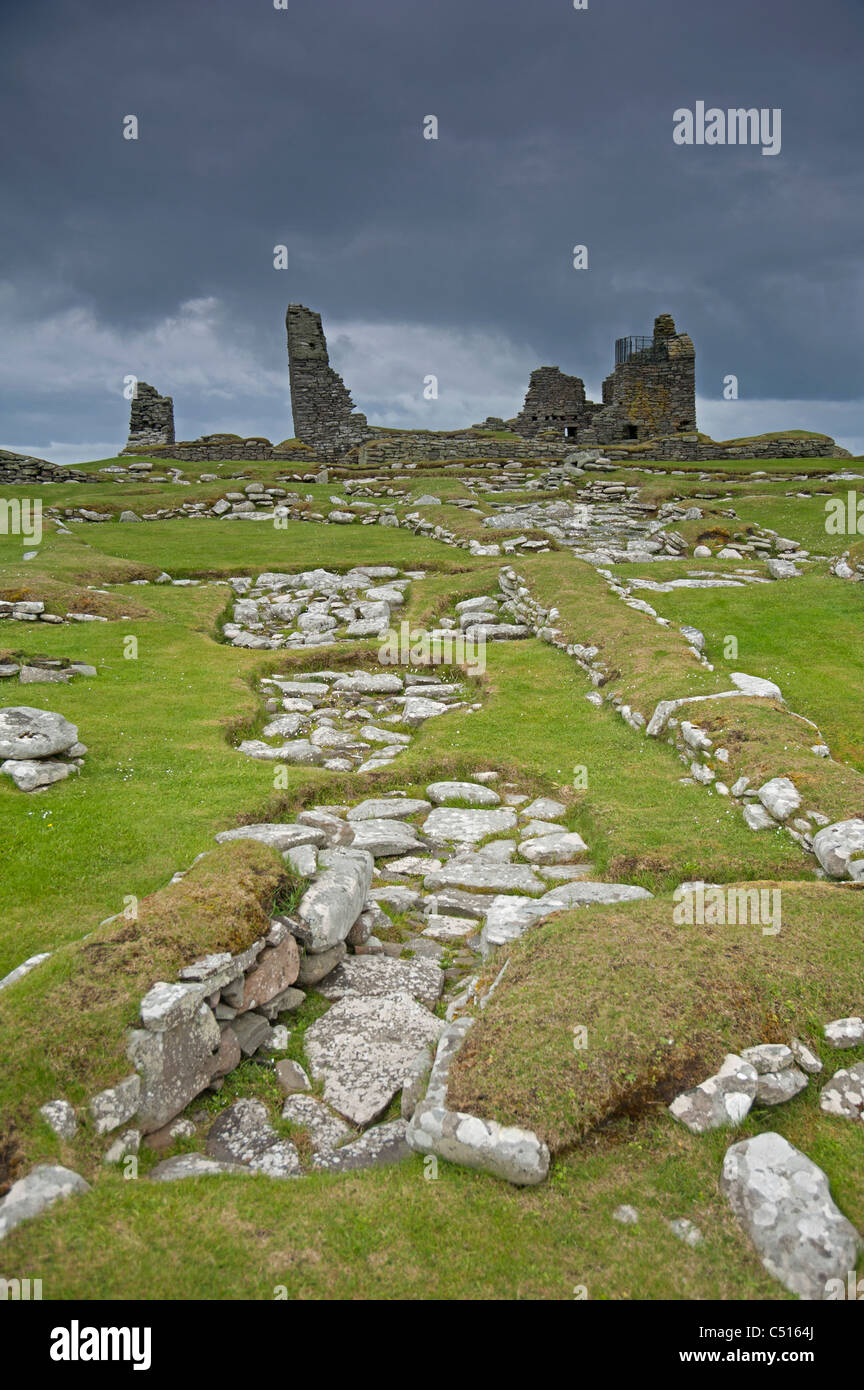Norse and Viking early settlements and pavements, archelogical remnants at Jarlshof, Shetland Isles. SCO 7406

Image details
Contributor:
David Gowans / Alamy Stock PhotoImage ID:
C5164JFile size:
60 MB (2.8 MB Compressed download)Releases:
Model - no | Property - noDo I need a release?Dimensions:
3736 x 5615 px | 31.6 x 47.5 cm | 12.5 x 18.7 inches | 300dpiDate taken:
13 June 2011Location:
Jarlshof settlement, West Voe,Sumburgh, Shetland Isles. United Kingdom.More information:
Jarlshof is the best known prehistoric archaeological site in Shetland, Scotland. It lies near the southern tip of the Shetland Mainland and has been described as "one of the most remarkable archaeological sites ever excavated in the British Isles". It contains remains dating from 2500 BC up to the 17th century AD. The Bronze Age settlers left evidence of several small oval houses with thick stone walls and various artefacts including a decorated bone object. The Iron Age ruins include several different types of structure including a broch and a defensive wall around the site. The Pictish period provides various works of art including a painted pebble and a symbol stone. The Viking-age ruins make up the largest such site visible anywhere in Britain and include a longhouse; excavations provided numerous tools and a detailed insight into life in Shetland at this time. The most visible structures on the site are the walls of the Scottish period fortified manor house, which inspired the name "Jarlshof" that first appears in an 1821 novel by Walter Scott. The site is in the care of Historic Scotland and is open from April to September. In 2010 "The Crucible of Iron Age Shetland" including Mousa, Old Scatness and Jarlshof was added to the those seeking to be on the "tentative list" of World Heritage Sites.